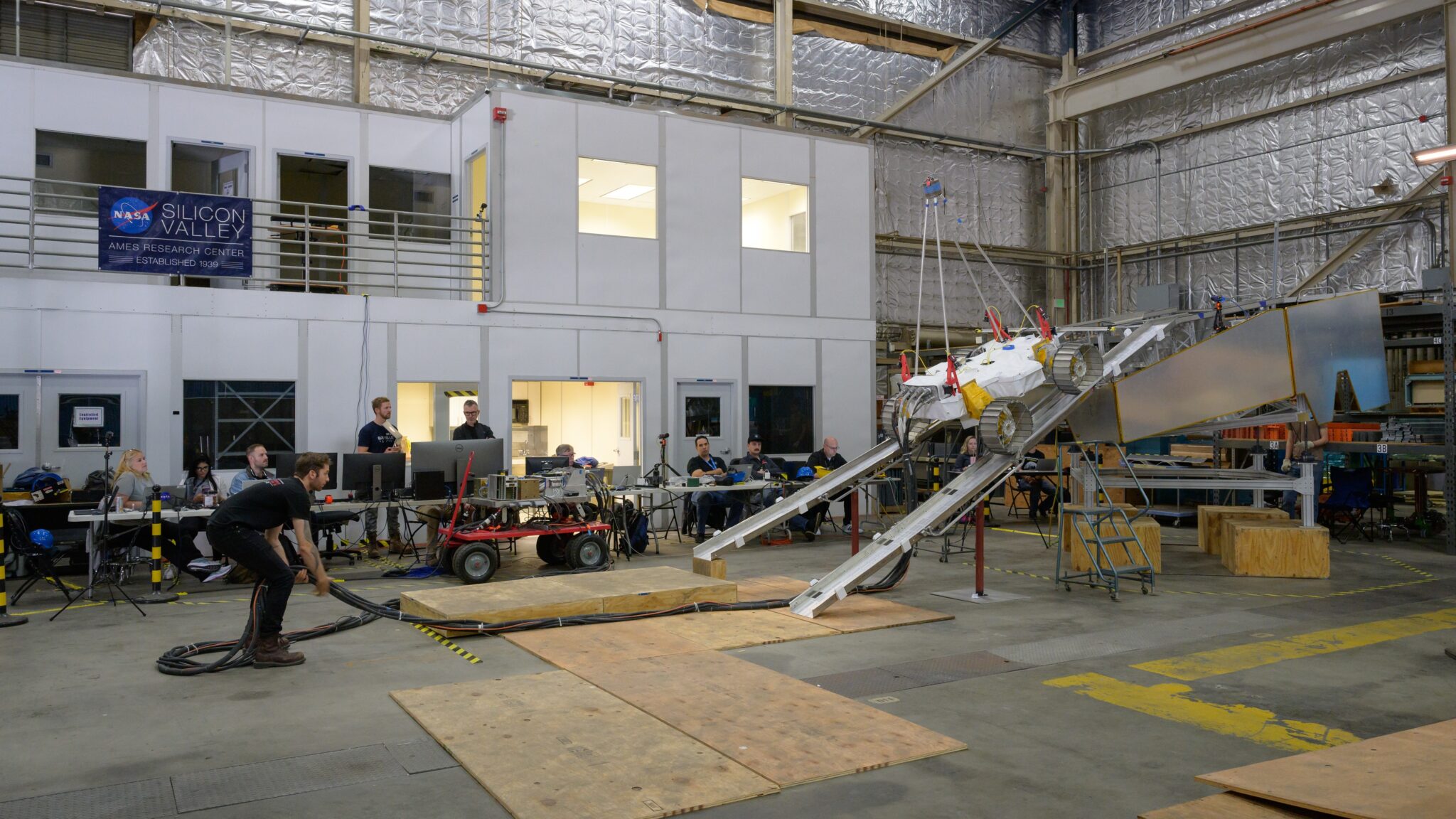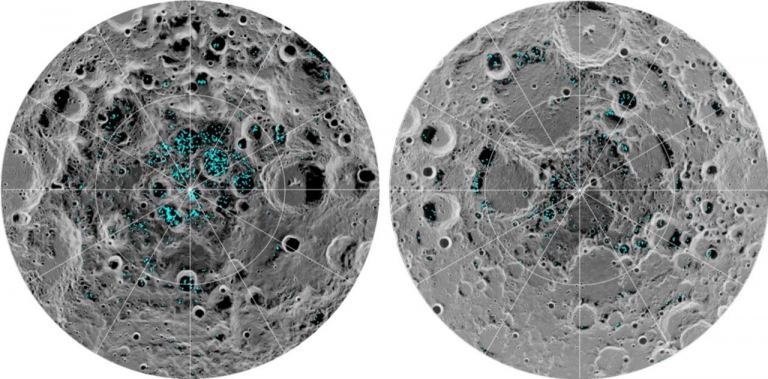NASA is building its first ever robotic lunar rover called VIPER (Volatiles Investigating Polar Exploration Rover). Its launch is scheduled for the end of 2024. But the terrain it will find when it reaches the Moon is not yet possible to predict. A series of tests helps engineers understand the limits of the lunar rover’s capabilities and ensures that the VIPER will be able to land from its lander even on extremely uneven terrain.

“We’ve tested all of the ‘bounding’ cases for VIPER’s egress on the Moon. This included the worst-case high-pitch scenario using the steepest – and scariest – ramps, the worst-case roll scenario using the most uneven ramps, and the worst-case scenario with pitch and roll combined,” said Jasper Wolfe, head of VIPER testing at NASA Ames Research Center in California.
VIPER landing point
The Astrobotic Griffin landing platform, which will take the VIPER to the Moon, uses a system of ramps that adapt to the terrain. However, this adaptability means that one side of the ramp may be inclined steeper than the other. Ensuring that VIPER can compensate for any irregularities is the goal of the testing mode.
The latest tests were carried out using a prototype called Moon Gravity Representative Unit 3 or MGRU3. It simulates the expected behavior of the rover in the conditions of the Moon’s gravity, which is 1/6 of the Earth’s gravity.
The planned landing site of the VIPER is mountain Mons Mouton near the south pole of the Moon, named after the Apollo computer programmer Melba Mouton. Mons Mouton is convenient for a lunar rover because it has a high flat surface and receives more sunlight — vital for a solar-powered wheeled vehicle. But the mountain also has signs of the presence of water ice under the surface, which VIPER will try to find and put their position on the map.
Discoverer for Artemis
VIPER will act as a discoverer for the Artemis program, seeking resources and a better understanding of how water is preserved inside deep shadowed craters and in the lunar regolith. VIPER will be the first lunar rover equipped with headlights that will allow it to look into these dark craters. It is also equipped with a drill that can dig up to 1 meter below the surface.

The lunar rover and its lander will be delivered to the Moon by a Falcon Heavy rocket as part of NASA’s Commercial Lunar Payload Services (CLPS) program in 2024. The mission should last about 100 days, including the goal to survive several long lunar nights.
Extreme conditions
NASA has already built lunar rovers, which in general have covered more than 90 kilometers, transporting astronauts of the Apollo missions. But the remote-controlled lunar rover will be the first for the agency.
The engineering requirements for the lunar rover are very different from the requirements for the Perseverance rover. In the absence of an atmosphere, extreme temperatures on the Moon can range more than 260 degrees Celsius, and the night can last up to a week. But it also has its advantages: being closer to Earth, VIPER can be controlled in real time, and not with a delay, like rovers.
Earlier we reported on whether astronauts would look for life on the Moon.
According to NASA
Follow us on Twitter to get the most interesting space news in time
https://twitter.com/ust_magazine
